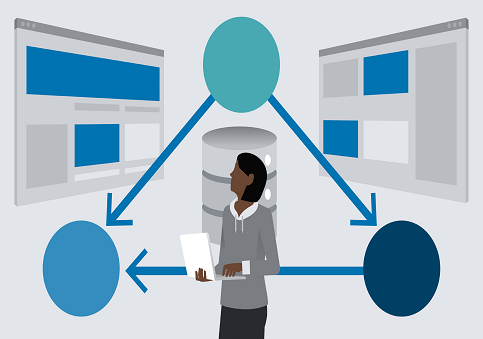Configuring your Company's Future

By chance, you might have heard about content delivery networks and how they are of great value to enterprises and workspaces. Because of the potent caching properties of CDNs, many companies have opted to use them, perhaps to forward their websites to current and potential customers in other parts of the globe, or simply to speed up the turnover of work through digital means.
You might be interested in getting one, and you’re excited to talk to CDN providers to get the best CDN experience. But let’s talk about CDN settings first. Okay, that seems to be an anticlimactic turn of events, but you’ll thank us here at BelugaCDN for giving you info about this. Aside from the usual knowledge about origin pulling and caches, understanding the basics of key CDN settings will help you not only get to know how CDNs work but also will help you communicate well with CDN providers, allowing you to perform the best CDN usage.
Time to Live
Part of best CDN practices is being conscious of the CDN setting “time to live”, or TTL. You can ask CDN providers to help you in monitoring TTL CDN settings so that performance is at its optimum all the time, and CDN settings lead to the Best CDN performance. But what is TTL, or “time to live”? The CDN setting of TTL pertains to the data that is cached in the CDN and how long it will stay, or “live” in the cache. Without a specific TTL CDN setting, the functions of the best CDN will diminish. Data will keep on being cached, and might overload the CDN. CDN providers will have to handle this dilemma right away. If not, best CDN practices are not followed, and will cause the CDN to falter.
CDN providers can simply create CDN settings of a specific time for data to be let go, or in other words, assign data’s lifespan. After this CDN setting of a lifespan, data will be released, and the cache is cleared again. The best CDNs are with best CDN settings so that the TTL is matched with the usual traffic that CDN providers expect the website will be experiencing for a certain time interval. The best CDN will be able to provide data to websites visitors right on time, and also let go of data on schedule so that overloading of the cache won’t happen. CDN providers can give you more insight so that you will only be following the best CDN practices to keep your CDN running, with a proper TTL.
Origin Path
Another part of best CDN settings is to utilize the CDN’s origin path settings. CDN providers can help you with origin path CDN settings, too. CDN providers will specify CDN settings of origin paths for various website content, so that there are different routes data will take instead of just using one pathway for all kinds of data. But what are CDN settings for origin path? The origin path is where the website will get the data from when website visitors request them. CDN providers can help you with this CDN setting by identifying specific paths for videos, text, images, and so forth.
The best CDN providers are able to identify different CDN setting paths for different website content, and will consolidate these at the CDN for perfect presentation to website visitors. So instead of a singular origin path, or a single “road” from where data travels, there are various “roads” to travel into, meaning lesser traffic. The best CDN settings are made to for the CDN to function quickly and smoothly.
Purge Cache
The best CDNs are able to look after their caches and make sure that data in it is always new. How can data be “not new”? When data includes on-time changes, such as comments sections and updated social media posts, data has to be constantly pulled from origin sources all the time. But what if “old” data is what is in the cache? This will result in the website not being managed with best CDN practices, and will deliver old data that lacks update. How can you keep data “fresh”?
CDN providers may do a cache purge once in a while so that the CDN will only have new data pulled from the origin at key times. Doing a cache purge means clearing all the data in the cache to give room for new ones. The best CDNs are able to function well by being maintained regularly, and a cache purge is key to the maintenance by CDN providers. Through a cache purge, your CDN maintains its best CDN status.
Conclusion
Another free option is the use of open-source CDNs, or CDNs you can manipulate through coding. CDN providers might not come into play here anymore; what you might need is the expertise of coding professionals, or those who can create for you the best CDN for your company. What makes this the best CDN, without having to pay CDN server prices? Through programming, your CDN can have other features that regular CDNs won’t have. In other words, the best CDN can be one customized for your own needs. The payment here, however, might come in the form of professional fees for coding experts, but if you have such knowledge in you or in your IT team, you’ll really have to waive CDN server prices.
The Long and Short of It
In summary, you have a lot of CDN server price options in deciding what is the best CDN for you. Whether free or at a cost, there is a CDN out there for you. To get to know more options, talk to BelugaCDN now so that you also get to know more about CDNs.
Power-up your Content Delivery
30 Day Free Trial Cancel Anytime